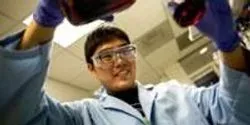News

Science, technology, engineering and mathematics schools vary in many ways, but they share eight major common elements. So finds a nationwide study of 23 STEM schools conducted by the University of Chicago’s Outlier Research & Evaluation group.

In a new study, Sanford-Burnham Medical Research Institute researchers have used human pluripotent stem cells to generate new hair. The study represents the first step toward the development of a cell-based treatment for people with hair loss. In the United States alone, more than 40 million men and 21 million women are affected by hair loss. The research was published online in PLOS ONE.

Good news for laboratory supervisors–their position has made CNN Money’s top 10 list of quickest-growing jobs in America, released Jan. 27.

Ribonucleotides, units of RNA, can become embedded in genomic DNA during processes such as DNA replication and repair, affecting the stability of the genome by contributing to DNA fragility and mutability. Scientists have known about the presence of ribonucleotides in DNA, but until now had not been able to determine exactly what they are and where they are located in the DNA sequences.

The University of Wisonsin-Madison said in a statement that the lab was not closed due to animal rights activists.

The stereotype that women lack natural "brilliance" could explain their underrepresentation in academia, according to new research based at Princeton University.

Long before Emory University’s innovative new water reclamation facility began harnessing the power of nature to clean and recycle wastewater for non-potable uses on campus, the system was already serving as a living laboratory.













